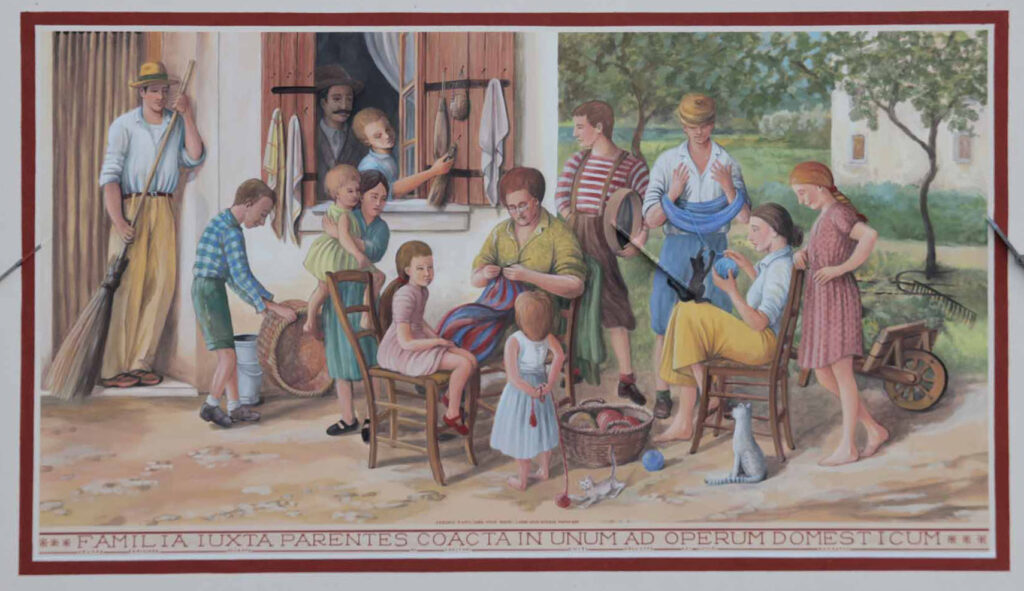Luogo: Località Fratta, 125 Tarzo (TV)

LA FAMIGLIA NUMEROSA
Ubicazione: Fratta – Casa De Coppi De Polo
Autore: Gabriele Cattarin
Anno realizzazione: 2016
Tecnica: Pittura murale con silicati
Le famiglie di un tempo erano sovente numerose, formavano una piccola comunità composta da nonni, genitori e numerosi figli, di varie età. Nell’opera è rappresentata la famiglia De Polo, composta da 11 figli, ritratti da foto dell’epoca messe a disposizione dai discenti diretti, proprietari della casa. I figli, così numerosi rappresentavano non solo bocche da sfamare, ma anche forza lavoro. Le ragazze si occupavano dei lavori domestici e dei fratelli più piccoli coadiuvando la madre, mentre i ragazzi aiutavano il padre nei lavori nei campi. Un omaggio alla famiglia come comunità, alla gioia che comunque c’era anche senza la ricchezza e che si vede nei volti rappresentati.

The large family
Location: Fratta (municipality of Tarzo) – House De Coppi-De Polo
Author: Gabriele Cattarin
Year of creation: 2016
Technique: wall painting with silicates
Formerly families were often large, forming a small community of grandparents, parents and many children of various ages. The painting depicts the De Polo family, who had 11 children, represented by taking photos of the period provided by the descendants of the family and owners of the house as a model. Those many children were not only mouths to fill, but also workforce. Girls would take care of the housework and of the younger siblings, thus helping their mother, while the boys would help their father with the work in the fields. The work is an homage to the ideal of the family as a community and the joy that existed even without wealth and that is visible on the faces of the characters depicted..

LA FAMIGLIA NUMEROSA
Standort: Fratta – Haus De Coppi De Polo
Autor: Gabriele Cattarin
Jahr: 2016
Technik: Wandmalerei mit Silikatfarbe
Die Familien waren einst sehr groß, bildeten eine kleine Gemeinschaft aus Großeltern, Eltern und zahlreichen Kindern unterschiedlichen Alters. In dem Werk ist die Familie De Polo mit 11 Kindern vertreten, durch Fotos aus der Zeit der Hauseigentümer abgebildet. So repräsentierten viele Kinder nicht nur Mäuler zu ernähren, sondern auch Arbeitskräfte. Die Mädchen arbeiteten im Haushalt und kümmerten sich um die kleinen Brüder. Die Jungs halfen ihrem Vater auf dem Feld. Dieses Wandgemälde ist eine Hommage an die Familie als Gemeinschaft, an die Freude auch ohne Reichtum.
